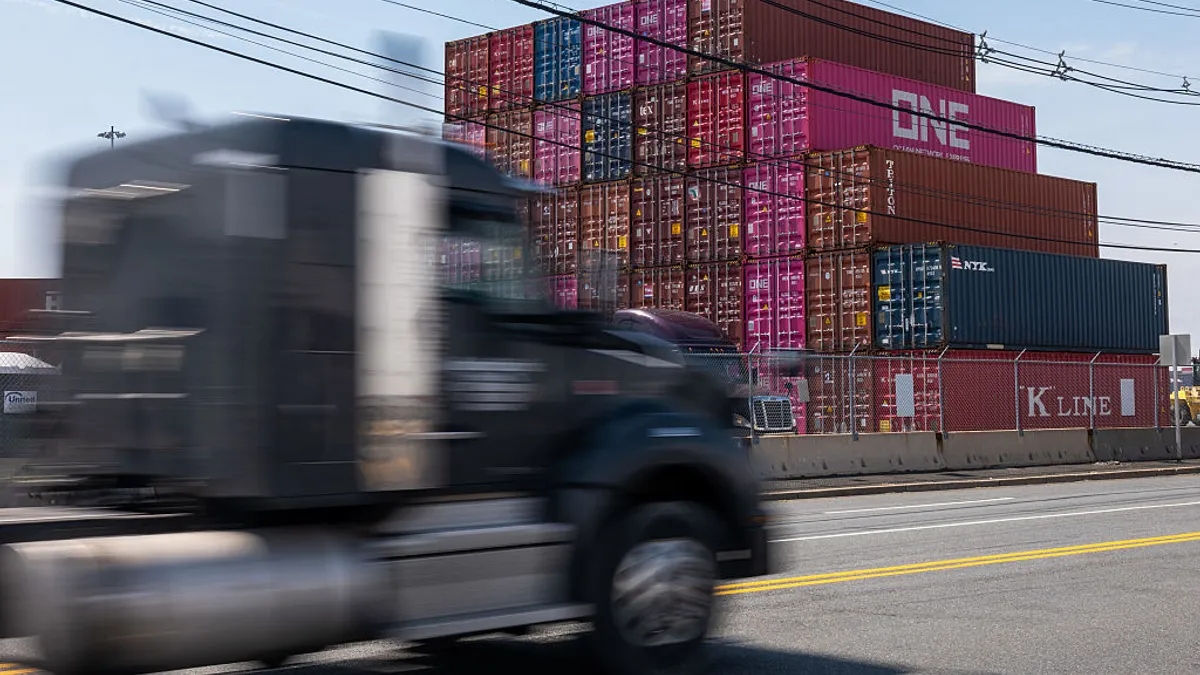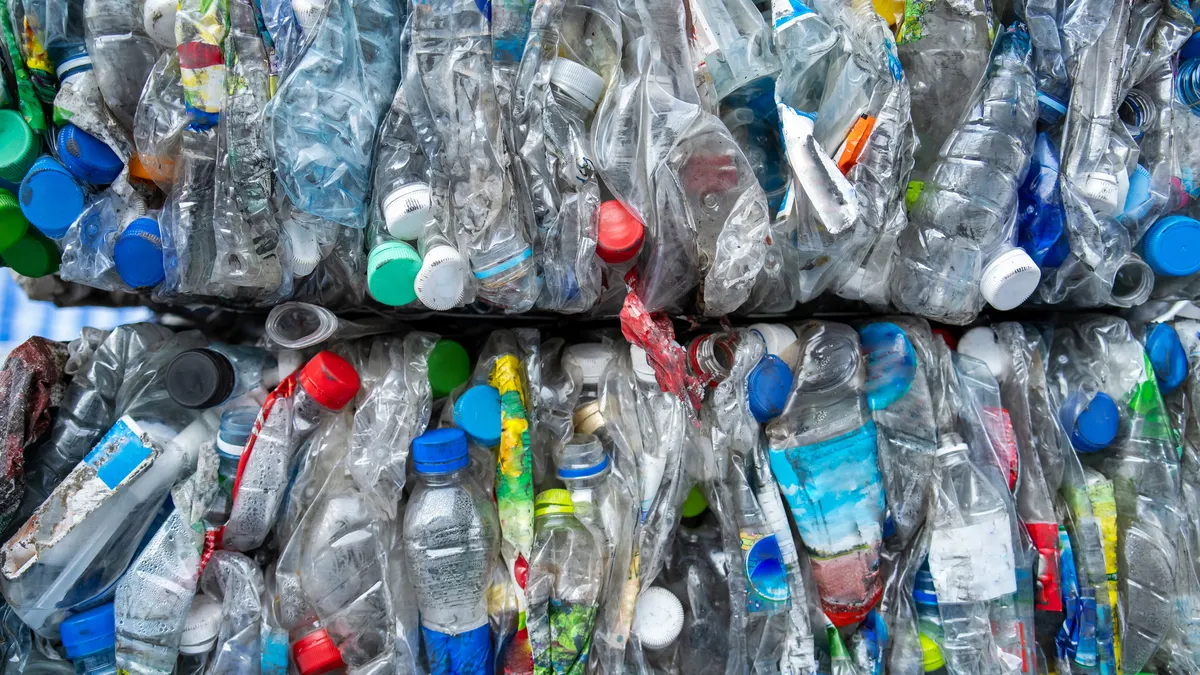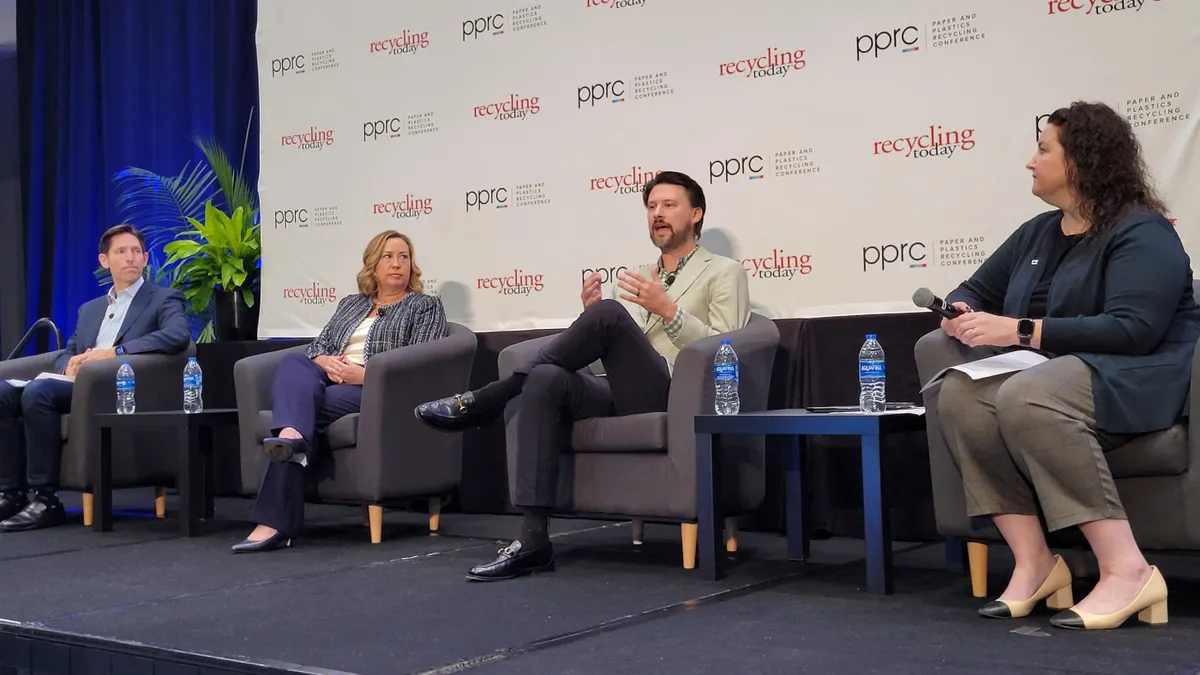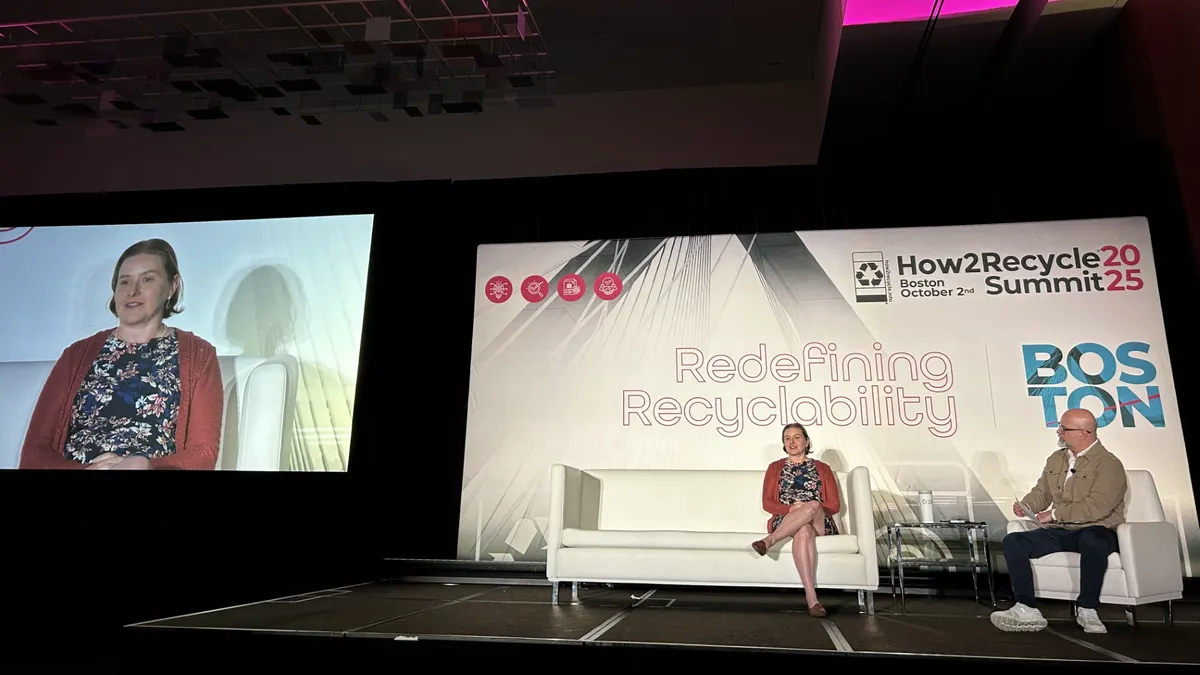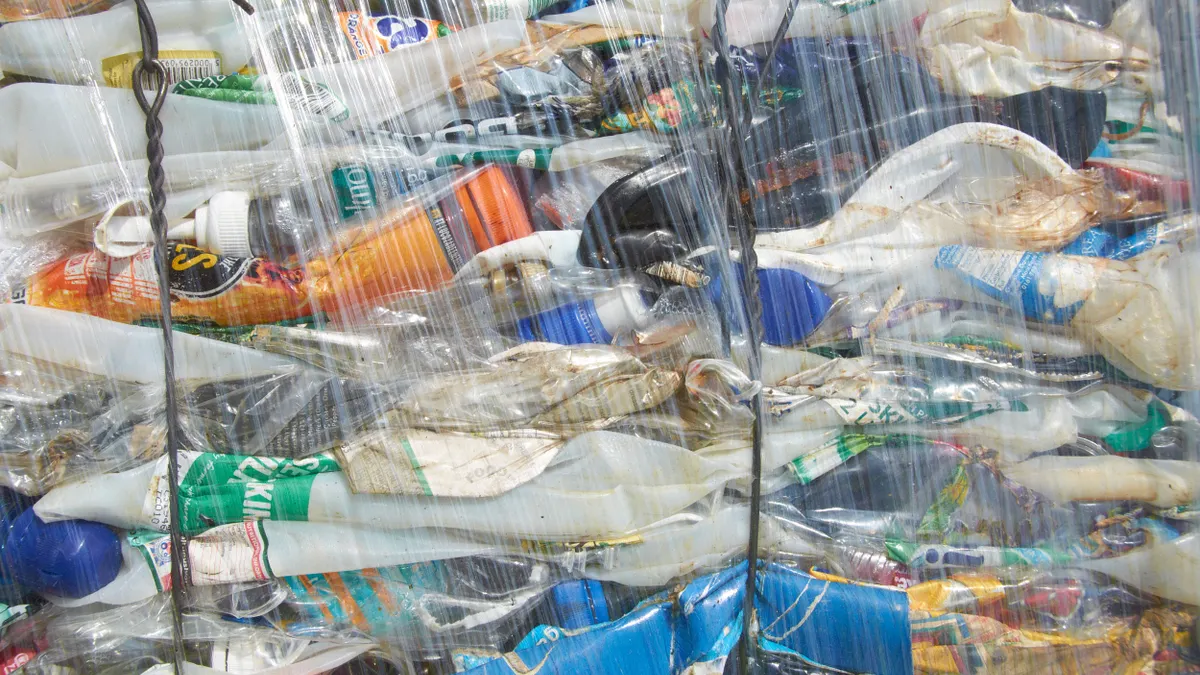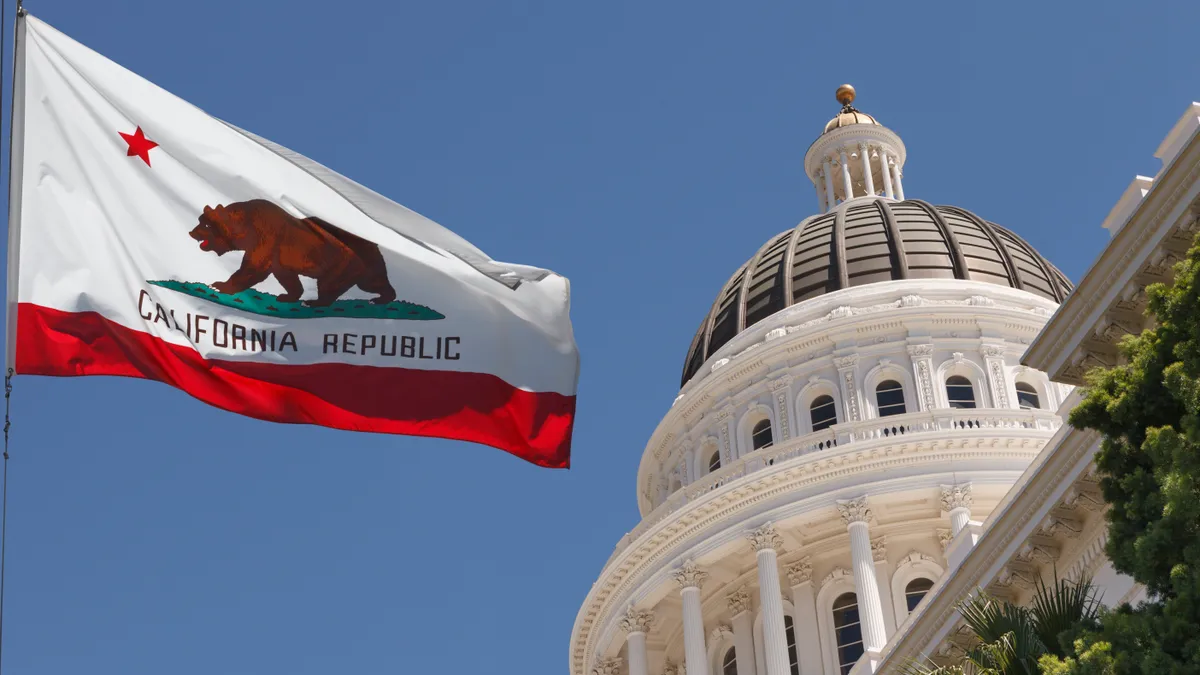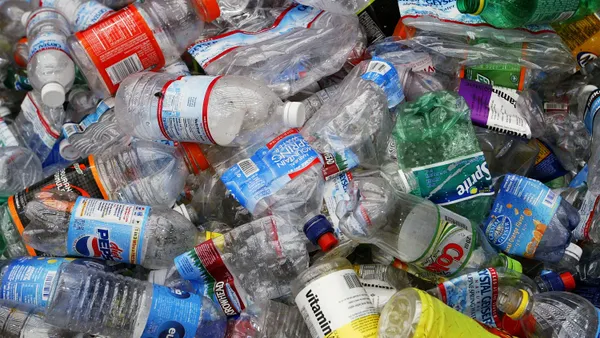Efforts to modernize bottle bills are still hamstrung by old myths, according to advocates representing the plastics, glass and metal packaging industries. But evolutions within the U.S. policy landscape amid the Trump administration’s emphasis on domestic manufacturing and the launch of state extended producer responsibility programs have helped build momentum in a productive year for these bills, they say.
The myths include that MRFs won’t be able to survive alongside bottle deposit schemes and that these systems burden consumers, said leaders from the Association of Plastic Recyclers, Can Manufacturers Institute and Glass Packaging Institute during a webinar Thursday on deposit return systems. The event was organized by the National Stewardship Action Council.
Today, only 20% of U.S. states have bottle deposit programs, and many of those policies are decades old.
“We are fans of many different policies to improve plastics recycling. Bottle deposits are one of them,” said Kate Bailey, APR’s chief policy officer. “Sixty percent of what we collect for plastic recycling, in terms of PET bottles, comes from the 10 states that have bottle deposits.”
GPI President Scott DeFife noted a similar statistic – 60% of the cullet that can go back into glass bottles comes from the 10 bottle bill states, he said. Conversely, when glass is recovered in a commingled single-stream system, the glass is much more likely to end up as something other than a bottle due to quality issues, he said.
Recycling refunds, a newer moniker for these policies, are “hands down the best policy in terms of getting the consumer to see an economic incentive on their container and recycle it,” said Mike Smaha, CMI’s vice president of government affairs.
One new catalyst for bottle bill discussions this year has been the start of packaging EPR programs, led by Oregon. That’s opened more serious conversations in the beverage space about the role for recycling refunds, rather than just EPR fees, Smaha said. “I think that there is a cost savings for folks who want to utilize a recycling refund program versus an EPR program,” he said.
Bailey highlighted Oregon’s depot model. “We're also learning so much as EPR is rolling out, that not everything is going to be collected through a curbside recycling program,” and drop-off sites will be needed for hard-to-recycle items, Bailey said. “Many of us are familiar with bringing our electronics to a depot for recycling,” which spurs the realization that “you can scale a depot program that can collect bottles.”
Strengthening circularity in the US
There’s more cheap virgin plastic than ever before, according to Bailey. What’s more, for U.S. companies that are still trying to incorporate recycled plastics, it’s often cheaper to source recycled content from Thailand, Vietnam and other parts of Asia than it is from domestic sources.
“We need to make sure the recycled content that companies are using is actually coming from our North American recycling programs,” Bailey said. This will require stronger policies to ensure recycled materials stay in the U.S. and are subsequently reused in U.S. manufacturing, she said, which would go hand in hand with placing disincentives on the use of imported materials.
Smaha described similar priorities for the can sheet manufacturing industry, which he said has invested heavily in U.S. production.
“The problem is we can't get enough used beverage cans back to feed those plants,” Smaha said. With the current administration’s discussion of reshoring, “we've got all this material – whether it's glass, it's plastic, it's metal – that we are consuming and we're disposing of here in the U.S.; why are we not capturing it and remaking things from it?”
While glass is largely a regional commodity, domestic bottle businesses are still struggling to get enough recycled material, DeFife said.
“Our biggest competition is the landfill,” DeFife said. “End markets that really shouldn't have to compete for material like this are ending up competing for material.” But circularity rates in bottle bill states are much higher.
To that end, NSAC and the Stewardship Action Foundation recently launched a “ReMade in America” pledge, calling on recycling stakeholders to support “a circular economy that truly works for America and for Americans,” ensuring that material manufactured in the U.S. is then recycled and reused domestically.
This would include commitments from recyclers to process and produce high-quality materials ready for remanufacturing by U.S. manufacturers, and from companies to use that recycled content. Signatories include Republic Services, Recology and others.
States to watch
Advocates celebrated numerous cases of legislative progress in 2025, even for bills that didn’t make it across the finish line.
Maryland and Washington ultimately passed EPR bills this year, but they also discussed bottle bills. Rhode Island ended up approving a needs assessment that calls for data that might be used to consider a possible bottle bill in the future. And a Texas bill moved out of committee before running out of time. “That’s a pretty big win,” Smaha said.
Meanwhile, New York discussed a bottle bill expansion, Iowa assessed changes on redemption access and Michigan held study meetings that could inform possible modernizations.
Illinois and Virginia could be statehouses to watch in the next couple of years, Smaha added.
Bailey expects cost to be a huge factor in upcoming government discussions the next two years. “I think there's a real opportunity for us to talk about the cost to local governments and the cost to consumers of the problems we have today, and the opportunity to reduce those costs with new programs — like deposits, like EPR — moving forward,” Bailey said.
Additionally, “we're talking about jobs and domestic manufacturing and a resilient domestic economy, and that message is always welcome in governments, and particularly welcome these days,” Bailey said. “Those are two themes that are really going to be beneficial for us to focus on in the next couple of years.”
EPR is poised to further shift thinking around bottle deposits. As EPR programs in the U.S. get off the ground, “eventually there's going to get to be a performance objective that needs to be met,” DeFife said.
Examples from around the world show that combination programs have the highest recovery rates, DeFife said, and “I think there's going to be a realization that some need to change and augment the system in order to get to the higher performance rates.” As such, these discussions will continue “for the next five to 10 years, at least.”
Another key going forward will be not just adding more bottle bills, but actually modernizing this type of policy. This requires understanding pain points in the existing 10 states, and addressing those issues in new bottle bill states, Smaha said.





